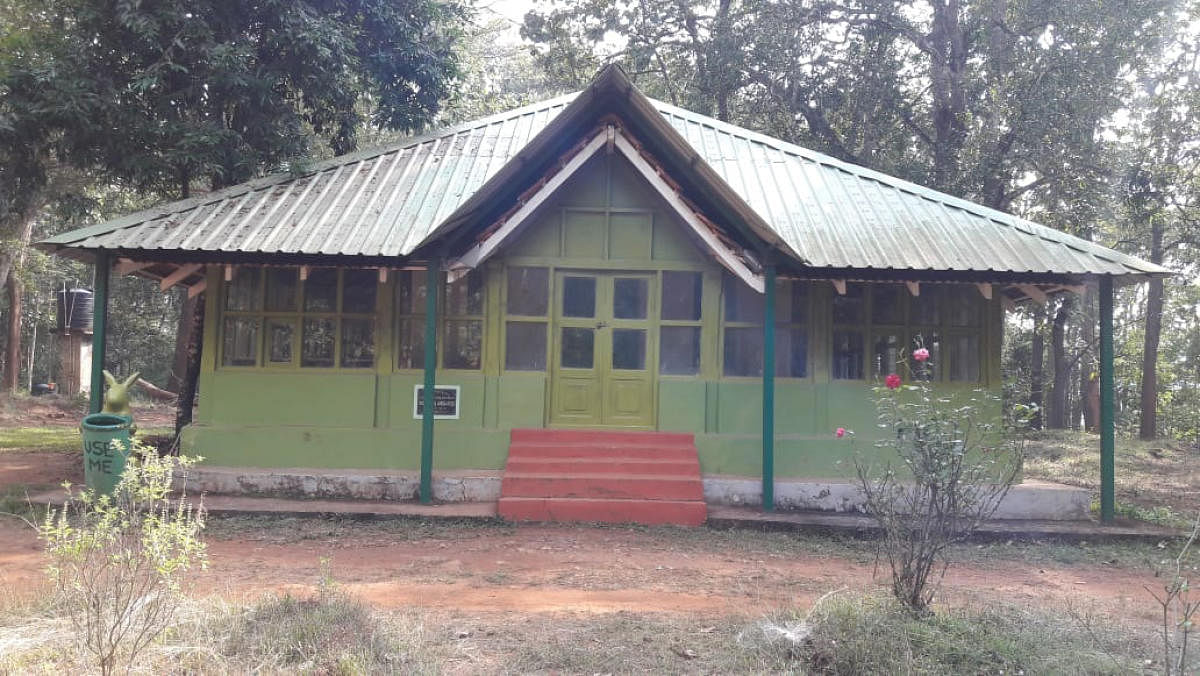
H Y Maiyadi, 51, hasn’t forgotten the day his father died in 1986. As an 18-year-old boy, he had helplessly stood drenched in the middle of the Bhadra Wildlife Sanctuary, waiting for the doctor’s arrival. Medical assistance could have saved his father. But the spate in the stream next to his village had cut-off the road connectivity with his village deep inside the jungle.
Not just his father, Maiyadi has lost many of his relatives to wild animal attacks, diseases and nature’s fury while living in Hipla village, one of the 13 villages that were rehabilitated by the Karnataka government from the core of the Bhadra Wildlife Sanctuary in 2001-2002.
“Since we moved to M C Halli rehabilitation centre in Tarikere taluk, life has become much better. Our life expectancy has increased and there are better facilities here,” he says. Bhadra rehabilitation process is considered to be a model. A visit to eight villages now shows that the forest has reclaimed the land, while the people are happy about the changed situation, as they don’t have to come in conflict with wildlife every day.
A majority of 736 families (4,000 people) who were living in the 13 villages of Bhadra Wildlife Sanctuary were peasants that Britishers brought them to work as labourers in their coffee estates or paddy fields. And over the years, they started living in the forest itself. Life was unpredictable inside the forest, due to the conflict with tigers, leopards, elephants, and other wild animals. But the uncertainty and troubles reached the peak when the government started constructing Lakkavalli Dam across River Bhadra in 1947. Not just their lands got submerged but also the road that connected these villages with Tarikere got disconnected.
What complicated the matter further for the villagers was the state government’s decision to declare 493 sq km of the forest as Bhadra Wildlife Sanctuary in 1974 and Union government’s decision to declare this as the 25th Tiger Protected area in 1998. With this, villagers lost hopes of getting basic facilities like road, water, medical care, electricity, education and others as rules did not permit setting up of any permanent structure inside the protected area.
The despair turned into anger, and villagers started expressing ire against wildlife. They burnt the forest, hunted animals and even revolted against forest officials. The government officials, both revenue and forest departments, were clueless about how to handle the issue. Forceful evictions were meted out with large scale forest fire.
It was only in 1996 that matters started falling in place. The High Court gave a verdict in favour of the government, with a rider that villagers should be rehabilitated suitably, followed by allotment of funds by the Union government for the purpose along with posting right officials that set the rehabilitation process in motion.
“Had it not been for Gopalkrishna Gowda, the then deputy commissioner of Chikkamagaluru, and deputy forest officer Yatishkumar, this process of rehabilitation would have never been completed,” says Ajabba Bhavuka, deputy range forest officer. Ajabba was a resident of Hebbe, who got the forester job on compensatory grounds. “Till the posting of these two officers there was a fierce battle between the villagers and the administration,” he says and adds that it was Yatishkumar’s humane approach that helped villagers shun violence.
Trust building
“Communicating in a simple and transparent manner with the villagers was one of the strategies I followed to win over the hearts of people,” Yatishkumar says and adds that most of the people wanted to come out but were not sure about their future outside the forest.
Initially, the water facility was provided in the villages. Roads, which were accessible only for government vehicles, were thrown open to villagers. Such gestures gradually brought down the incidents of a forest fire. And when they developed confidence in the department, the rehabilitation package was explained to them. While landless labourers and marginal farmers readily agreed to the rehabilitation package and the land was provided to them in M C Halli, which had irrigated land, and Kelaguru, a coffee plantation area; it was the landlords and upper-class people who opposed it as their share of the land was reduced.
Each of the landless and marginal farmers was given one acre of land, along with a compensation of Rs 2 lakh in cash, a 30X40 plot to construct house and transport facility to shift their goods along with the wood used for a house. The government also compensated paddy fields with Rs 80,000 per acre, Rs 7 lakh for areca plantation and Rs 2 lakh for the coffee estate.
It has been almost 16 years since the villagers moved out of the forest. The rehabilitation centres have basic facilities and better connectivity with Chikkamagaluru, Tarikere and other markets today. Hospitals at doorsteps, electricity, concrete roads, round-the-clock water have changed their lives. So much so that students who could not get an education beyond primary school then, have now completed their medicine, management, engineering and other courses.
Chikkamagaluru chief conservator of forests, Vijay Mohan Raj, says forest and wildlife, who got 492 sq km of undisturbed forest area, have benefitted greatly because of this relocation.
While he did not quantify the increase in the number of predators and wild elephants inside the forest, he says that there has been substantial growth in their population.
The once paddy fields have now been covered with thick vegetation, especially bamboo. Water that was being drawn from agriculture activities is now being used by elephants for cooling off.
The forest fire, which once threatened to destroy the entire forest is now a highly non-occurrence, except in the peripheries where coffee estates have encroached forest lands. Forest Department officials claim that poaching has been completely stopped.
The Forest Department has converted the buildings of villagers and government schools into inspection bungalows and anti-poaching camps guarded each by four forest-guards round-the-clock.
